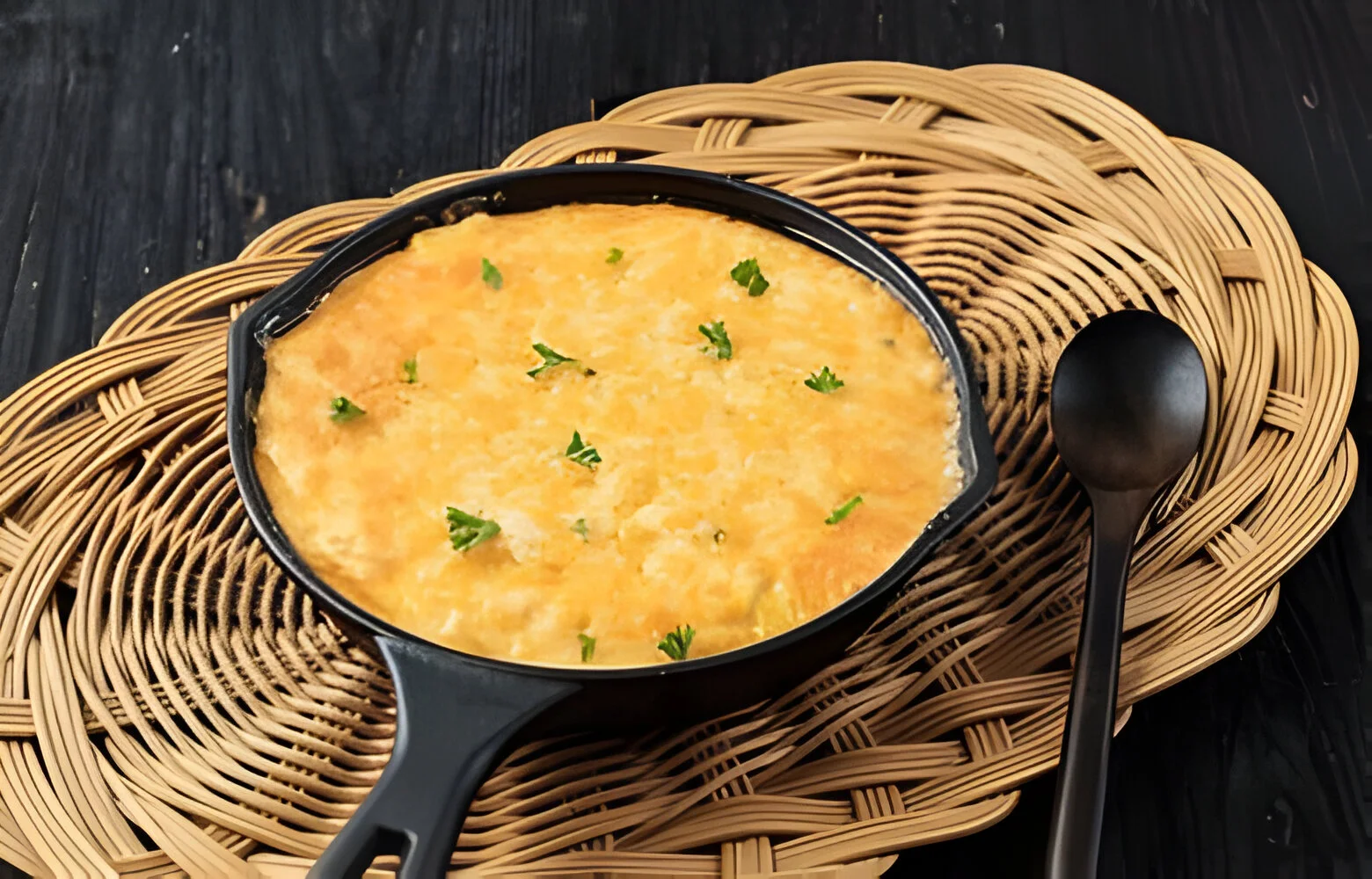Table of Contents
In the culinary world, the quest for the perfect smoked queso can sometimes lead to unexpected hurdles, with thickness being a common stumbling block. This comprehensive guide is designed to navigate through the creamy, savory journey of making smoked queso, ensuring it hits all the right notes of flavor and texture. From understanding the basics to troubleshooting and advanced tips, we’ll cover everything you need to know to achieve your ideal consistency.
Whether you’re a seasoned chef or a weekend cooking warrior, this article promises to enhance your queso-making experience, making every dip unforgettable. A question often arises in this quest: What if smoked queso is too thick? This guide not only explores this question but also provides the answers to ensure your smoked queso is just right.
Understanding Smoked Queso
Smoked queso has indeed become a culinary favorite, thanks to its rich flavors and versatility. Originating from traditional Mexican cuisine, this delightful dip melds creamy, melted cheese with a smoky undertone. Consequently, it’s perfect for dipping tortilla chips, drizzling over nachos, or enhancing various dishes. Furthermore, its adaptability allows it to fit into any meal, making it a hit at gatherings. Therefore, it’s no surprise that smoked queso has ascended the culinary ranks so rapidly.
Definition and popularity
At its core, smoked queso is a melted cheese blend, seasoned with a variety of spices, tomatoes, and sometimes meat, giving it a distinctive, mouth-watering flavor. The smoking process, whether done in a smoker or imparted with liquid smoke, adds a new dimension to the queso, setting it apart from its non-smoked counterparts.
Common ingredients and variations
The beauty of smoked queso is its adaptability. It often combines cheeses like cheddar, Monterey Jack, or American for creaminess. Green chilies, onions, and tomatoes add freshness. Cumin and chili powder bring warmth. Adding cooked ground beef or sausage makes it a hearty meal, considering dietary preferences.
Understanding the fundamentals of smoked queso is key to troubleshooting common issues, such as excessive thickness, that may arise during preparation. By grasping the importance of ingredient ratios, cooking techniques, and temperature control, you’re well on your way to creating the perfect batch of smoked queso, guaranteed to impress at any gathering. The question, What if smoked queso is too thick?, serves as a central theme in our journey to mastering this beloved dish.
Identifying the Problem
Recognizing Thickness in Smoked Queso
Understanding the nuances of smoked queso’s texture is crucial for both novice and experienced chefs. When the queso becomes too thick, it can significantly impact the overall enjoyment and versatility of the dish.
How thickness affects texture and flavor
A queso that’s too thick may cling heavily to chips, making dipping difficult, and could overpower the delicate balance of flavors with an overly rich cheese taste. The ideal queso should coat the dipping item lightly, allowing the smoky, cheesy flavors to shine without overwhelming the palate.
Causes of excessive thickness
Excessive thickness in queso can result from a few factors, including too high a proportion of cheese to liquid, excessive evaporation of liquid during cooking, or even the type of cheese used. Cheeses with lower moisture content can lead to a denser final product, as can cooking the queso at too high a temperature, causing the proteins in the cheese to tighten and expel moisture.
Troubleshooting Techniques
Immediate Solutions to Thin Out Smoked Queso
Achieving the perfect consistency for your smoked queso doesn’t have to be a daunting task. With a few adjustments and the right techniques, you can easily correct a batch that’s turned out too thick.
Adding liquid ingredients
Introducing additional liquids is a straightforward method to adjust the thickness. The key is to add slowly and stir continuously to integrate the liquid without curdling the cheese.
Types of liquids to consider
Broth (chicken or vegetable for a savory depth), milk, or even a splash of cream can be excellent choices to thin out queso while enhancing its flavor. For a tangy twist, consider adding a bit of tomato sauce or salsa, which can also introduce additional layers of taste and complexity.
Adjusting the temperature
Gentle heat is your friend when correcting queso consistency. A low and slow approach helps the added liquids blend seamlessly with the cheese, preventing separation or further evaporation that could exacerbate the thickness issue.
The role of heat in achieving desired consistency
Maintaining a consistent, low heat allows the cheese to melt smoothly, integrating with other ingredients without seizing or becoming grainy. This controlled environment fosters a velvety, uniform texture that’s ideal for dipping.
Stirring and blending techniques
Continuous, gentle stirring is crucial when adjusting the consistency of your queso. This method ensures even heat distribution and prevents the bottom from scorching, which could introduce an unwanted bitter flavor.
Tools and methods for effective stirring
A wooden spoon or a heat-resistant silicone spatula is perfect for stirring queso. These tools offer the flexibility and strength needed to mix thoroughly, ensuring every part of the queso is equally smooth and well-adjusted.
By implementing these troubleshooting techniques, you can salvage a batch of queso that’s too thick, transforming it into a creamy, flavorful dip that’s sure to be a hit at any table.
Preventive Measures
Tips to Prevent Smoked Queso From Becoming Too Thick
Averting the issue of overly thick smoked queso starts with a few proactive steps. By focusing on ingredient ratios, cookware selection, and precise cooking techniques, you can ensure your queso remains perfectly dip-able from the start.
Ingredient ratios and their importance
The balance of cheese to liquid is paramount in achieving the desired queso consistency. A good rule of thumb is to start with a 1:1 ratio of cheese to liquid (including tomatoes, chilies, and other moisture-contributing ingredients) and adjust based on your preference. Remember, it’s easier to thin a queso than to thicken it, so err on the side of caution.
Choosing the right cookware
A heavy-bottomed pot or a slow cooker can distribute heat more evenly, reducing the risk of hot spots that can lead to rapid evaporation or scorching. These options also maintain a consistent temperature, crucial for melting cheese smoothly without overheating.
Cooking time and temperature control
Low and slow wins the race when it comes to the perfect queso. High heat can cause the cheese to coagulate and release its fat, resulting in a greasy, unappealing texture. Simmer your queso gently, stirring often to prevent it from becoming too thick or sticking to the pot.
Advanced Tips and Tricks
Enhancing Your Smoked Queso
Taking your smoked queso from good to great involves more than just texture adjustments. By infusing additional flavors, using thickeners judiciously, and presenting your queso in innovative ways, you can elevate this classic dip to new heights.
Incorporating flavors without affecting texture
Layering flavors starts with the selection of cheeses and extends to the spices and extras you choose. Consider smoked paprika for an additional smoky kick or a dash of beer for a subtle yeast undertone. Introduce fresh herbs like cilantro or chives towards the end of cooking to preserve their vibrant taste and color.
Using thickeners wisely
If you find your queso consistently leans towards the runny side, a little cornstarch slurry or roux can help. However, use these thickeners sparingly; they should be a last resort rather than a go-to, as they can mask the natural flavors of your ingredients.
Creative serving suggestions to complement thick queso
Thick queso can be a feature rather than a flaw with the right presentation. Use it as a filling for jalapeño poppers or a topping for a gourmet burger. Alternatively, offer it alongside a platter of grilled vegetables and meats, allowing guests to enjoy it as a savory sauce.
By embracing these preventive measures and advanced tips, your smoked queso will not only hit the perfect consistency but will also burst with layered flavors, becoming a centerpiece of your culinary repertoire.
Exploring Regional Variations and Historical Significance
Queso, a cornerstone of Mexican cuisine, has crossed borders and cultures, leading to a myriad of variations. This section of the article ventures into the rich world of queso. It shines a light on the regional flavors and historical influences that have shaped its global enjoyment.
The Origins of Queso
The journey begins with the historical roots of queso in Mexican cuisine. Here, we see how indigenous ingredients and Spanish influences merged to craft the earliest versions of this cheese-based dip. Indeed, it’s intriguing to witness how each culture’s contributions have molded queso into what it is today. As a result, they have set the foundation for endless culinary creativity.
Regional Variations in Mexico
The narrative then explores Mexico’s internal diversity, where each region imparts a unique flair to queso. For example, the north is known for its spicy queso flameado. Meanwhile, the Yucatán offers the earthy queso relleno. These regional variants provide a window into the local traditions and ingredients that distinguish each area’s flavor profile.
Queso Around the World
Furthermore, the discussion expands to how queso has been adapted by immigrants and travelers in their local cuisines. This leads to unique versions, such as the Tex-Mex queso con carne, the refined French fondue, and the robust Italian quattro formaggi. Each version narrates a tale of cultural exchange and culinary creativity, fostering worldwide admiration for this adaptable dish.
The Evolution of Smoked Queso
Smoked queso offers a modern twist by blending Mexican flavors with American barbecue. Indeed, this fusion showcases its evolution as a versatile dish. A frequent concern, however, is: What if smoked queso is too thick? Interestingly, this question emphasizes the importance of achieving the right consistency. Furthermore, it underscores the necessity for continuous experimentation. By valuing its cultural origins and regional variations, we thus enhance our appreciation of queso’s role in cuisine and its prospects for innovation.
Frequently Asked Questions
What to do if my queso separates?
If your queso separates, it’s often due to overheating, which causes the cheese’s proteins to clump together and release oils. To fix this, remove the queso from heat immediately and let it cool slightly. Adding a splash of acid, like lemon juice or vinegar, can sometimes help the emulsion re-form. Gently reheat the mixture while stirring constantly. For future attempts, ensure a more controlled heating environment and consider incorporating a stabilizing ingredient like sodium citrate. This is a common concern when pondering, What if smoked queso is too thick? and can be mitigated with careful heat management.
Can I reheat and adjust smoked queso?
Absolutely! Smoked queso can be reheated slowly over low heat, with a bit of added liquid (such as milk or broth) to help maintain its creamy consistency. Stir continuously to prevent it from sticking to the pot and to ensure even heating. Remember, the key to successfully reheating queso is patience and gentle heat. This approach also addresses the question, What if smoked queso is too thick? by allowing for adjustments to achieve the perfect consistency.
How to store leftover smoked queso?
Leftover smoked queso should be cooled to room temperature before storing to prevent condensation and bacterial growth. Transfer it to an airtight container and refrigerate for up to 3-4 days. To extend its life further, you can freeze the queso, though this may affect its texture upon reheating. When ready to enjoy, thaw it in the refrigerator overnight and reheat gently, adding liquid if necessary to achieve the desired consistency. For more information on storing dairy safely, check the Food Safety Guidelines.
Can smoked queso be made with dairy-free cheese?
Yes, smoked queso can be adapted for a dairy-free diet by utilizing high-quality plant-based cheeses. Look for brands that melt well and mimic the creamy texture of traditional cheese. Nutritional yeast can also be added for a cheesy flavor boost. When using dairy-free cheese, you may need to adjust the amount of liquid ingredients since plant-based cheeses can vary in moisture content compared to dairy cheeses. Experimenting with different brands and types will help you find the perfect blend for your smoked queso, ensuring you don’t have to worry about the question, What if smoked queso is too thick?
How can I infuse more smoke flavor into my queso without a smoker?
If you don’t have a smoker but crave that deep, smoky flavor in your queso, there are several ways to achieve it. Liquid smoke, a concentrated flavoring made from actual smoke, can be added to your queso for an instant smoky taste. Alternatively, smoked cheeses like gouda or cheddar can impart a subtle smokiness to the dish. Smoked paprika or chipotle powder are other great options for adding a smoky flavor, plus they contribute to the queso’s overall depth and complexity.
What are some vegetarian alternatives for adding depth to smoked queso?
For those seeking vegetarian options to add depth to their smoked queso without relying on meat, consider roasted vegetables or smoked paprika. Roasted tomatoes, bell peppers, and onions can introduce a complex, caramelized flavor profile that complements the creamy cheese base. Smoked paprika offers a potent smoky essence that mimics the depth traditionally provided by meat, enriching the queso with its vibrant color and rich, warm undertones. Incorporating these elements not only maintains the dish’s vegetarian integrity but also enhances its overall flavor, making your smoked queso a versatile and inclusive option for all your guests.
Conclusion
We’ve explored the art of making perfect smoked queso. Our journey covered fixing excessive thickness and adding flavor. Remember, exceptional queso comes from balancing ingredients, controlling heat, and experimenting.
Encouragement to experiment
Cooking is a blend of science and creativity. Don’t shy away from experimenting with different cheeses, liquids, and flavors to discover your signature smoked queso recipe. Each batch is an opportunity to refine your technique and tantalize your taste buds. So, grab your spatula, and let’s dive into the delicious world of smoked queso making, where every dip promises a smoky, creamy adventure.
By adhering to these tips and techniques, you’ll ensure your smoked queso is always the highlight of the dining table, bringing warmth, flavor, and joy to any meal.





